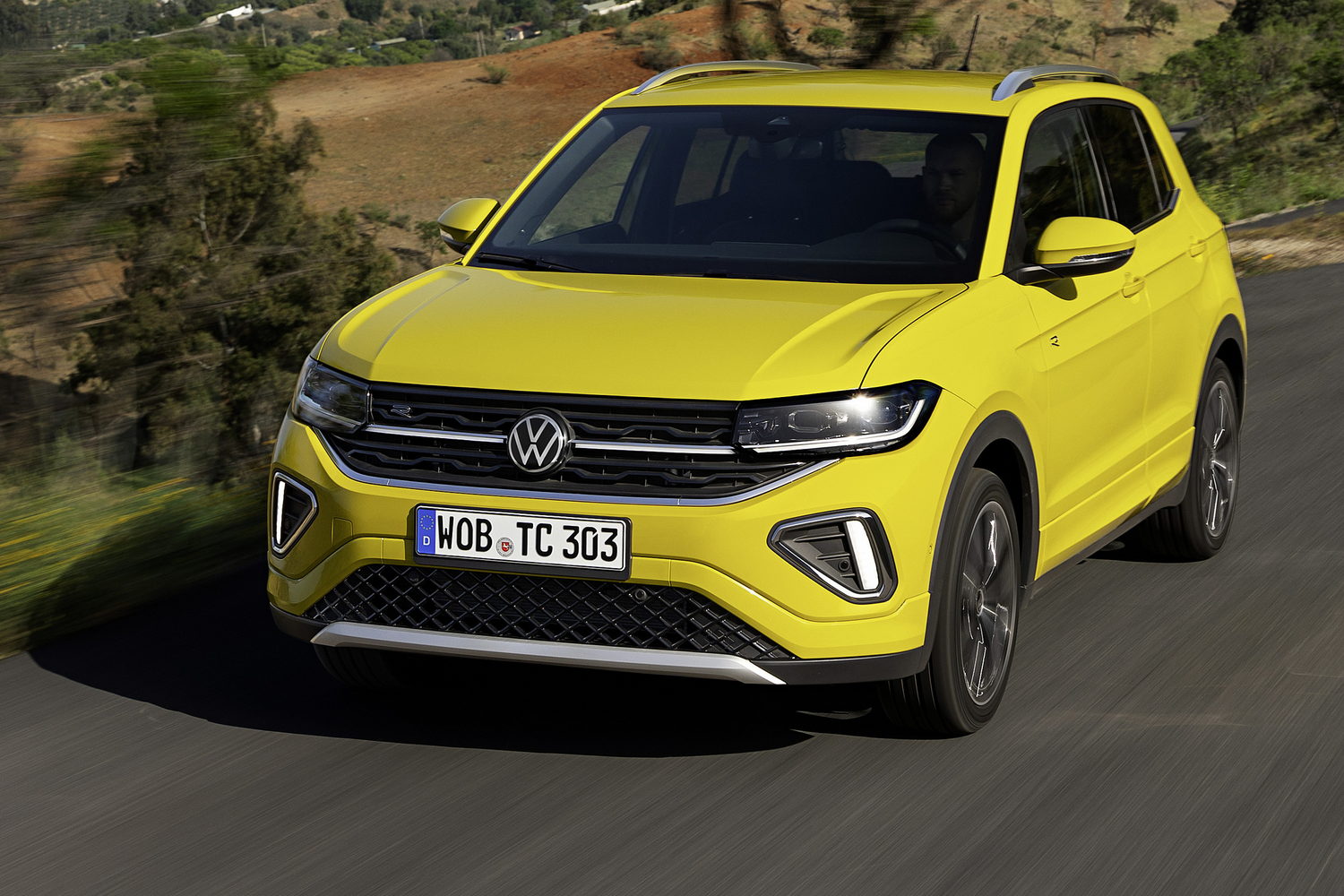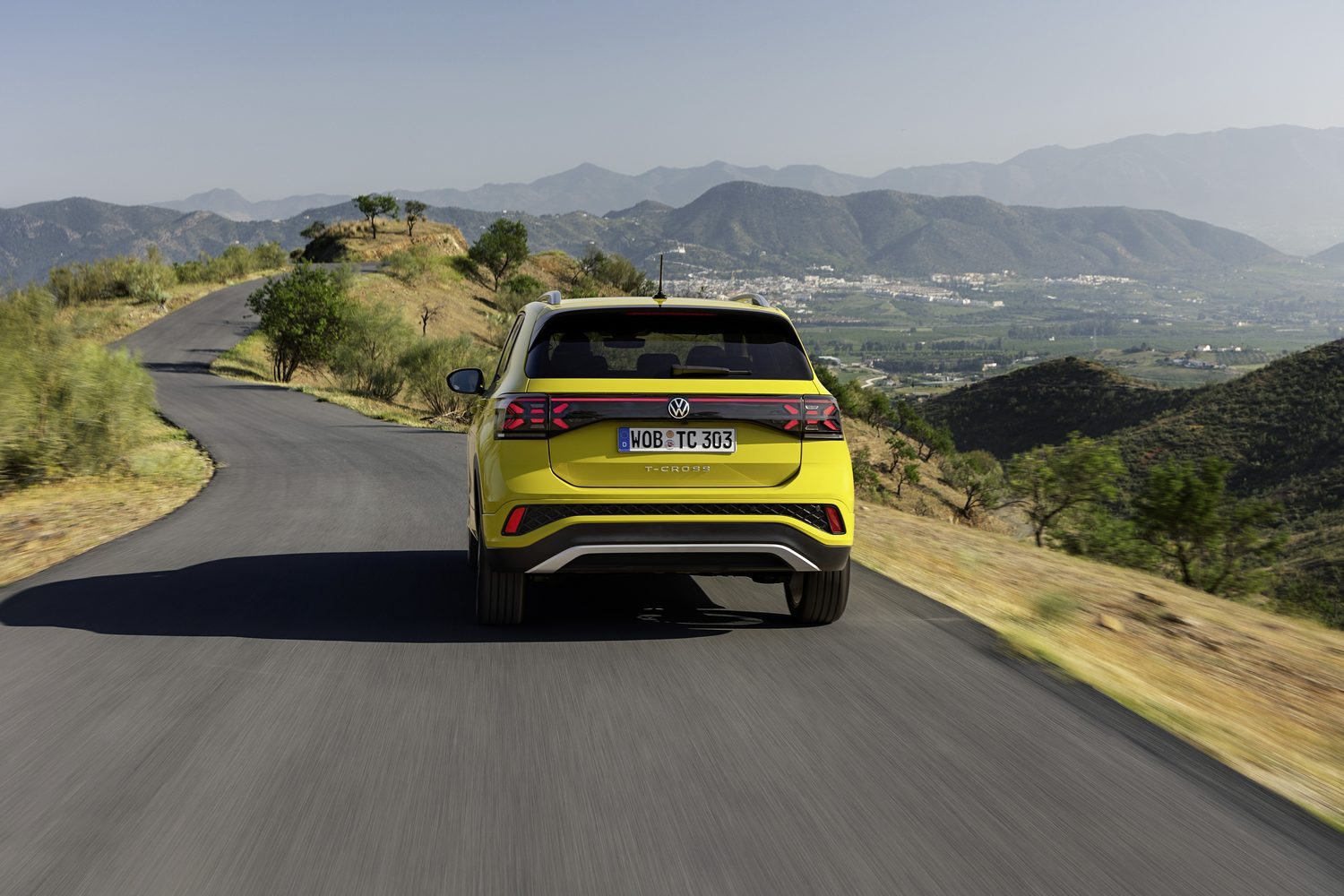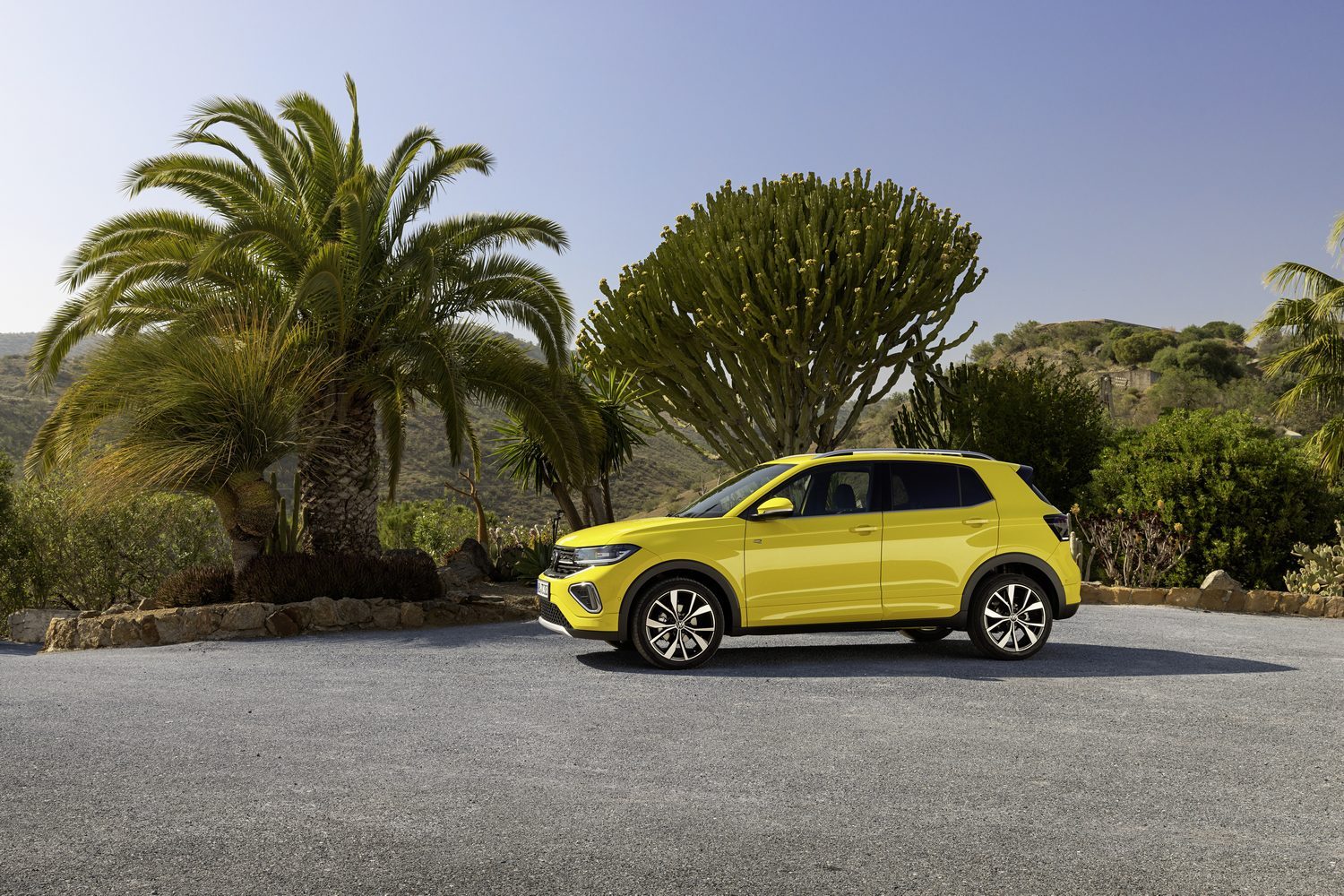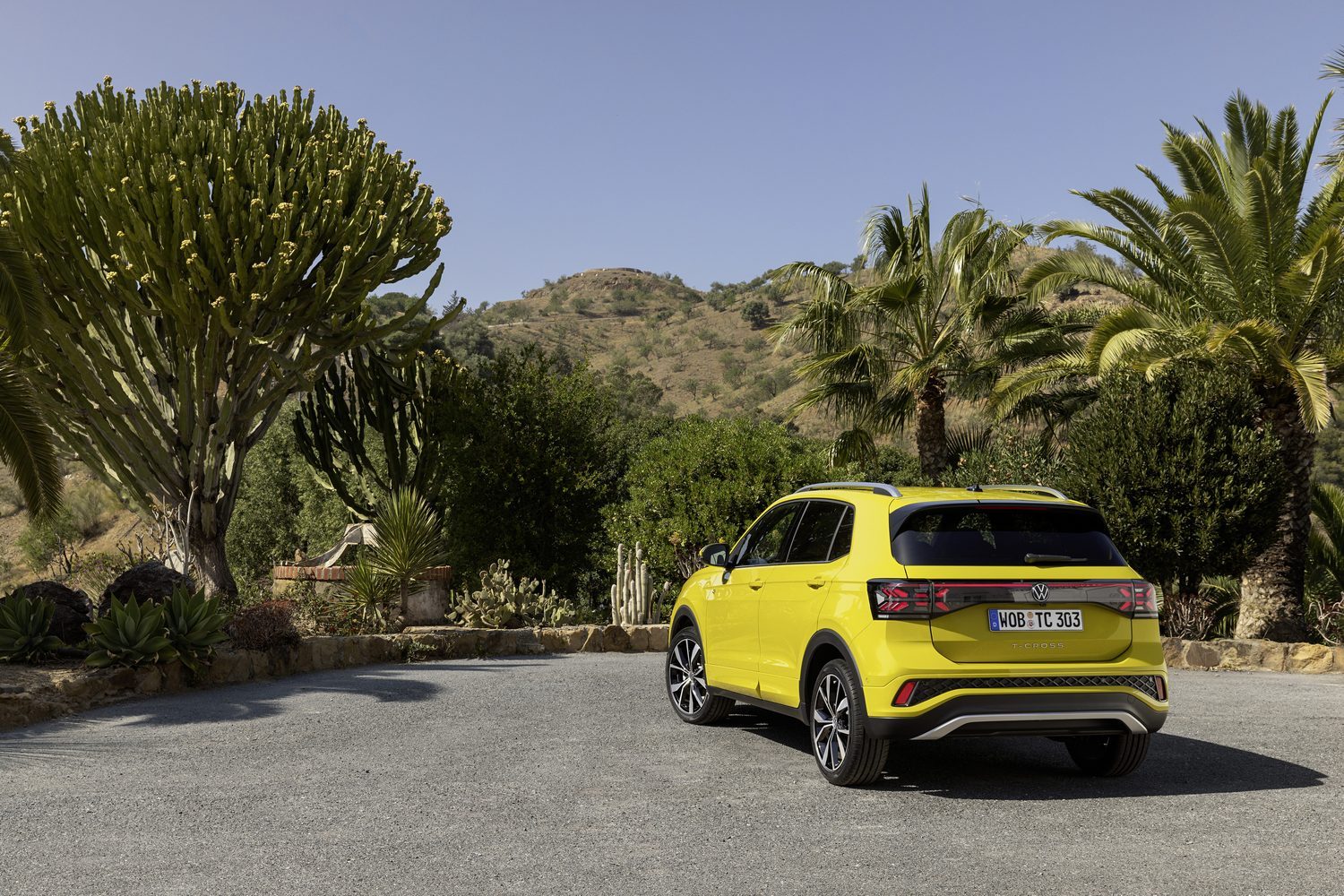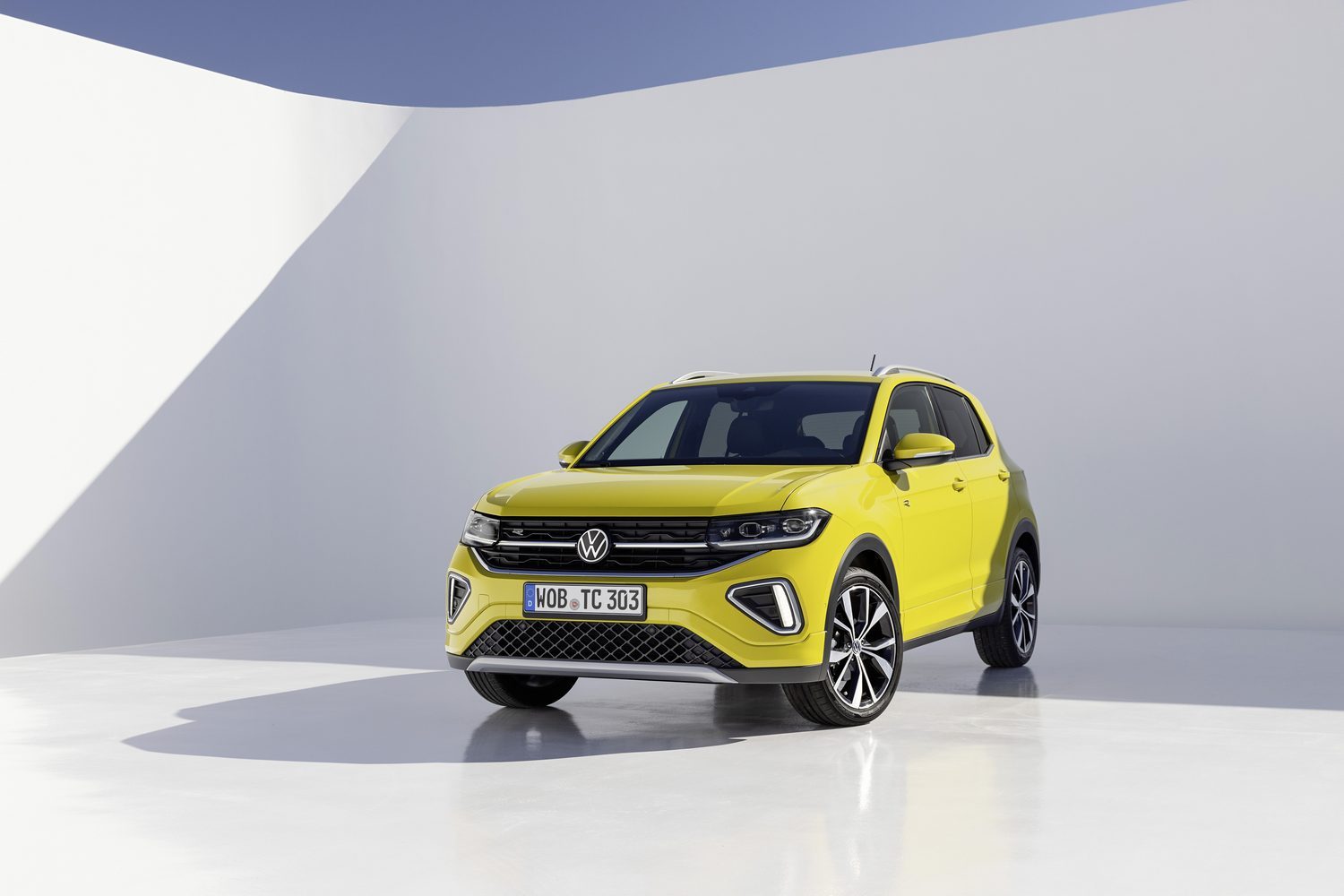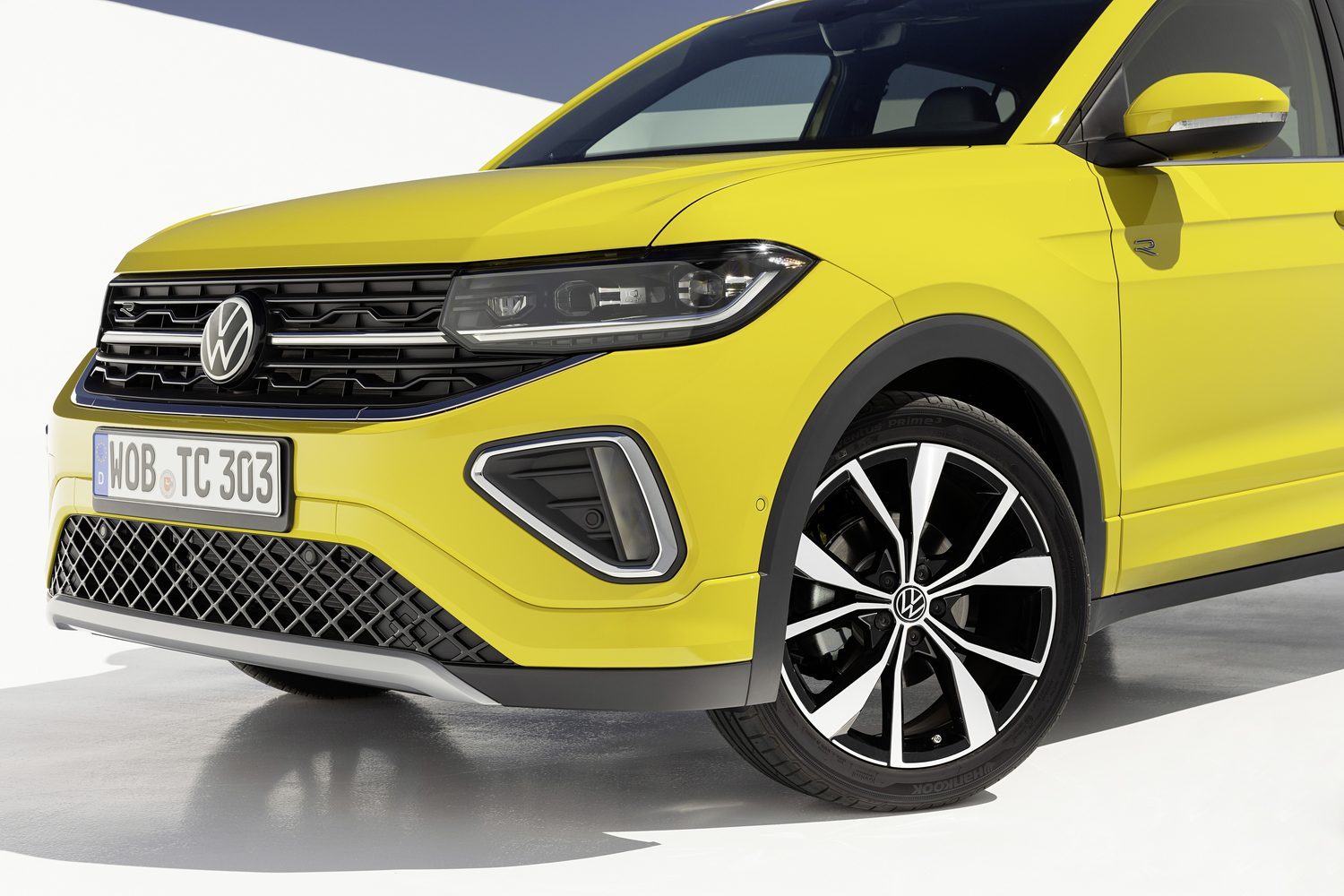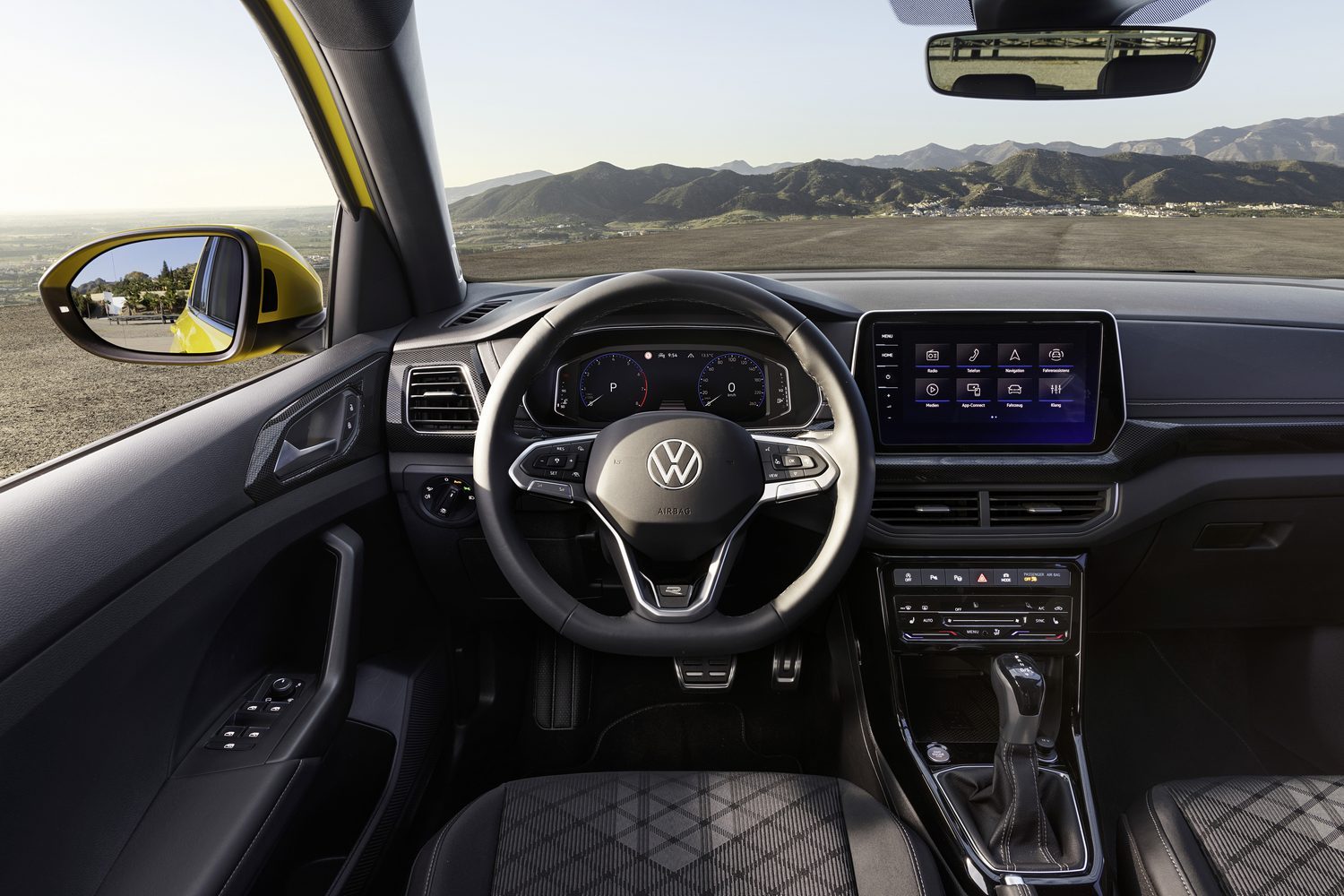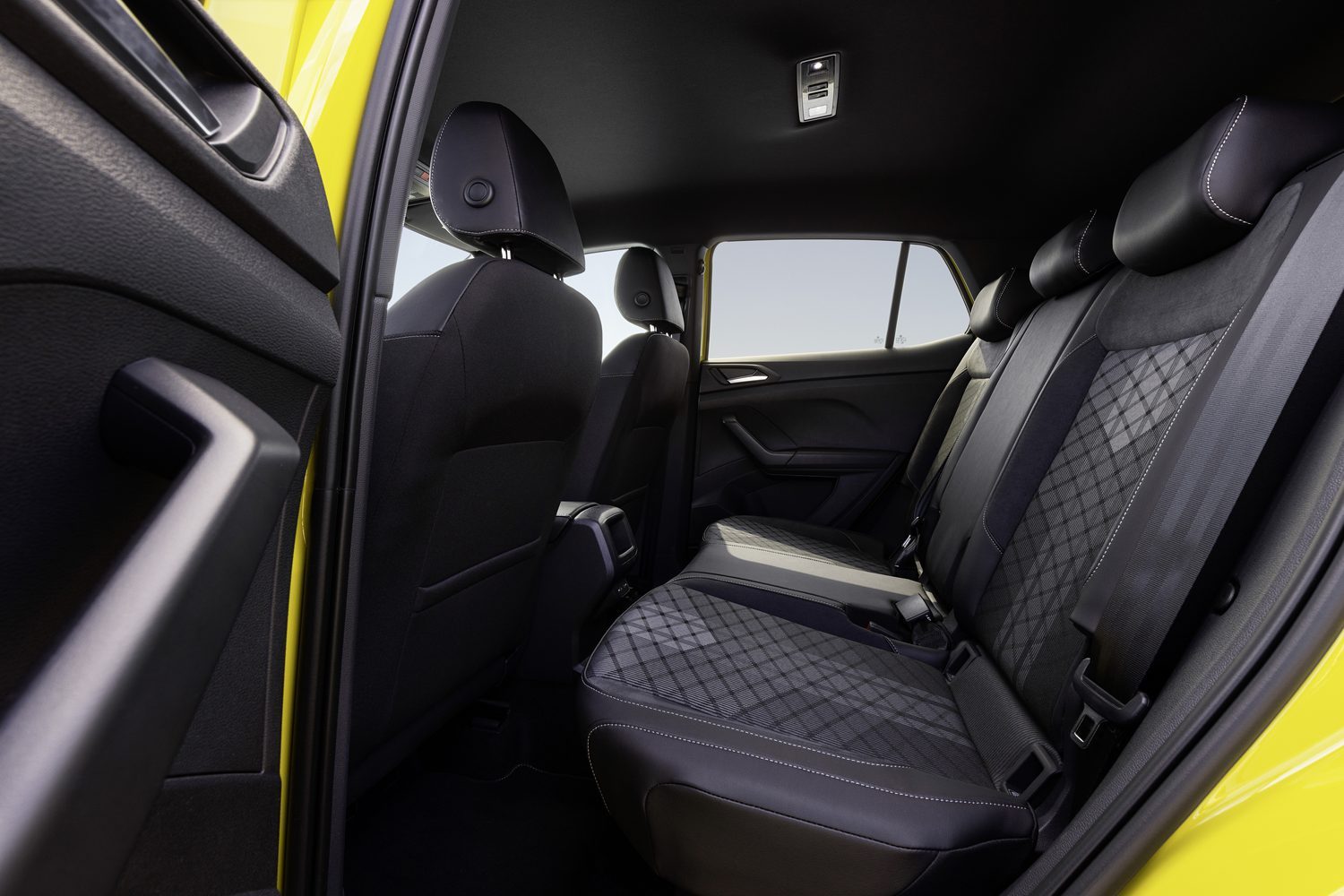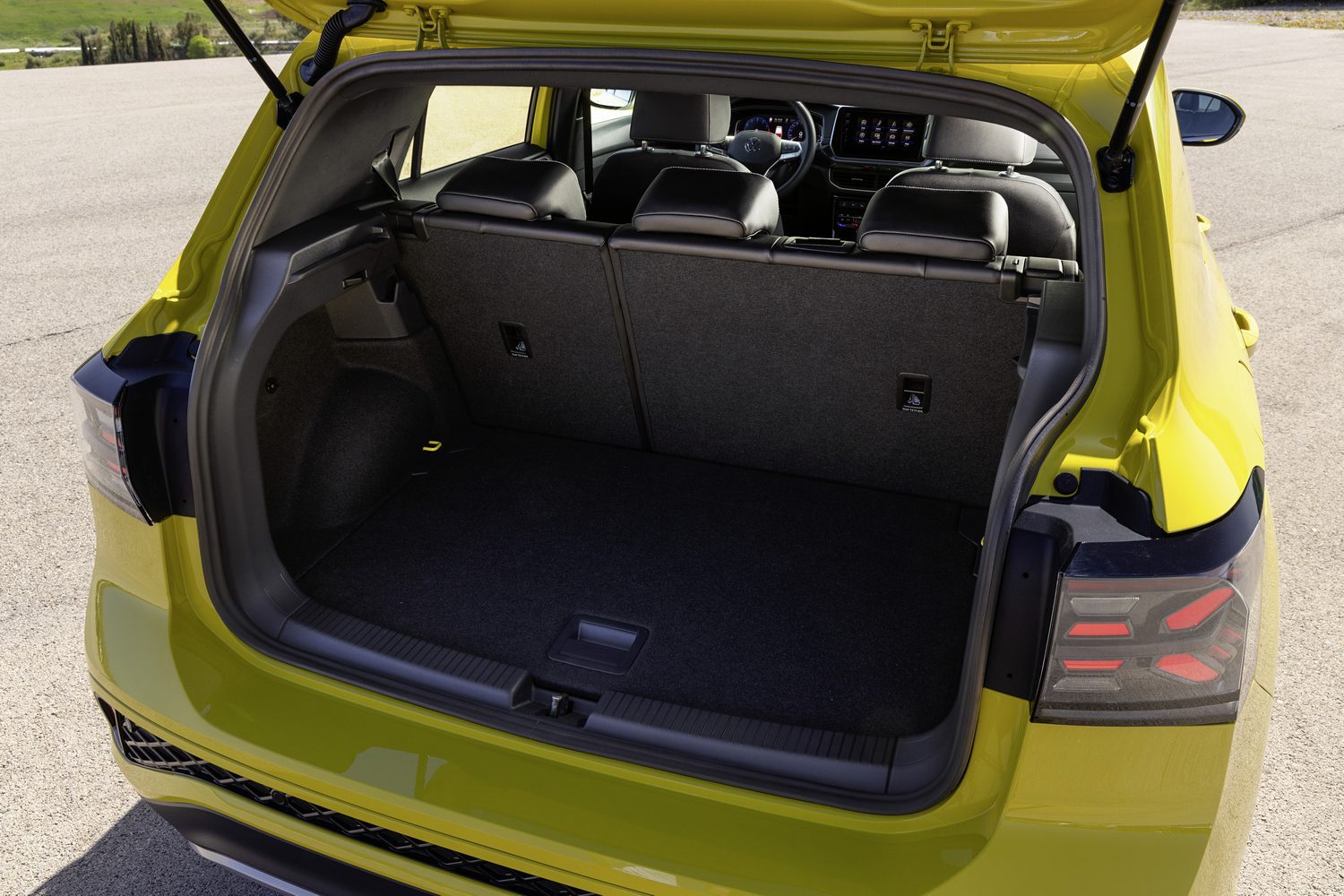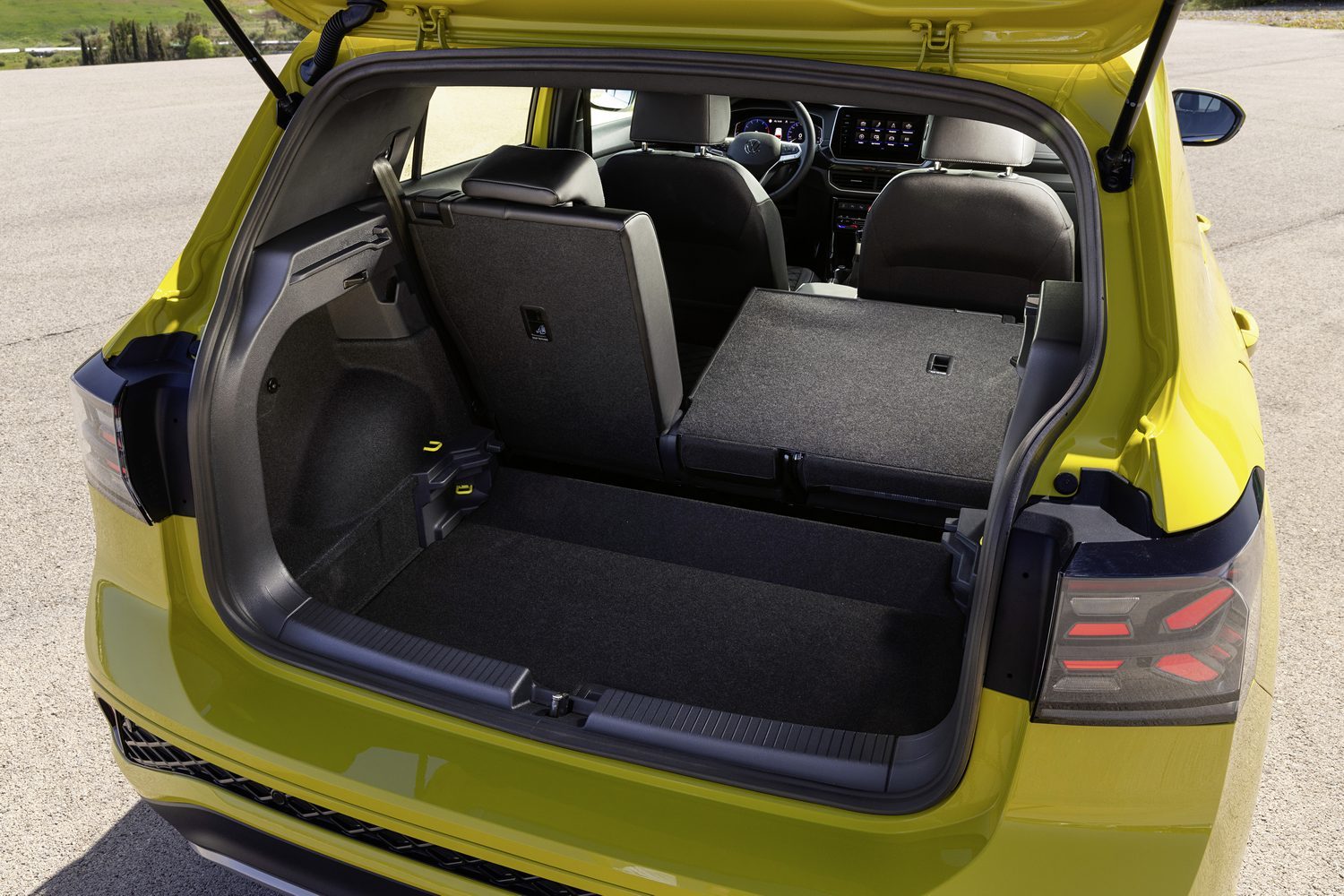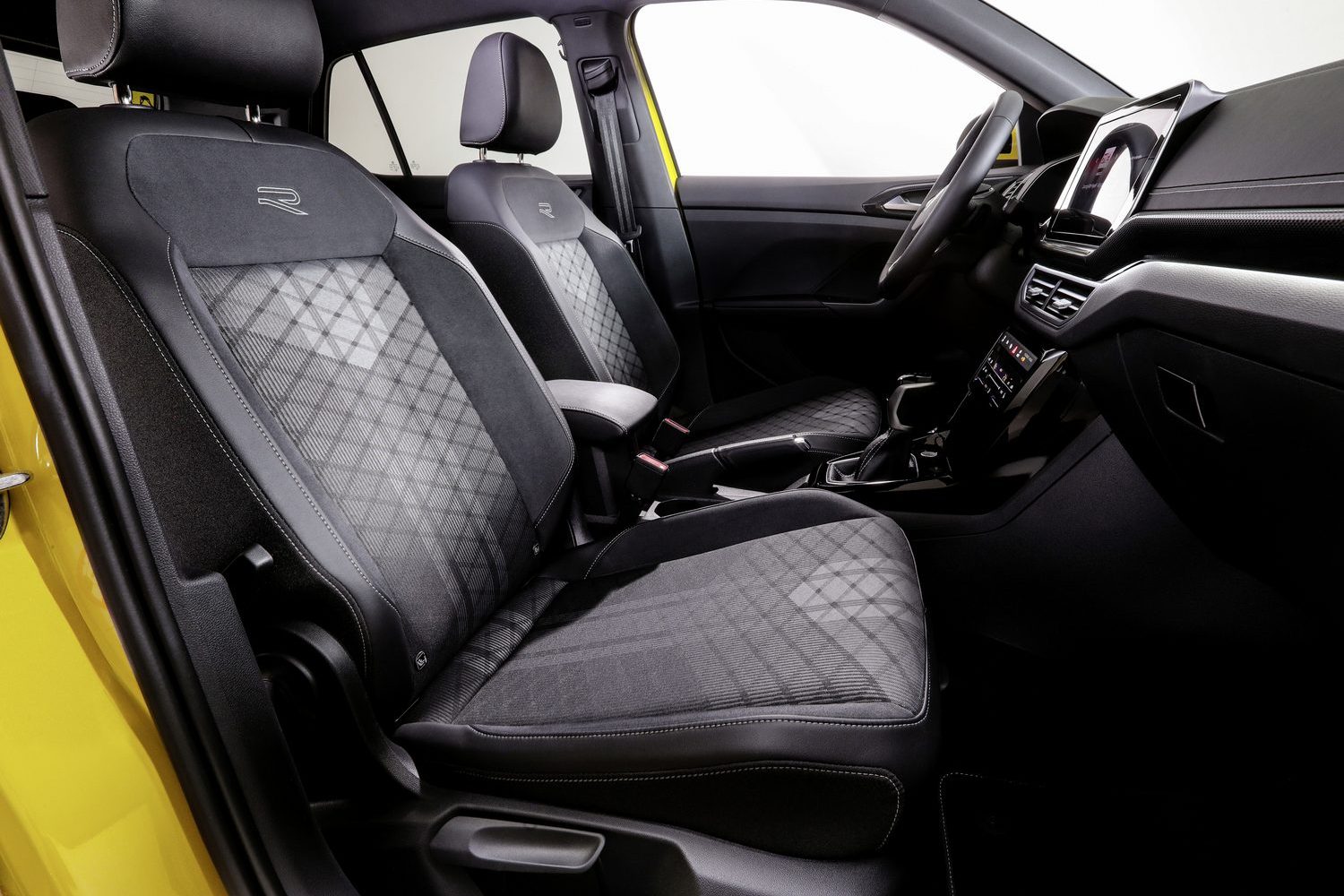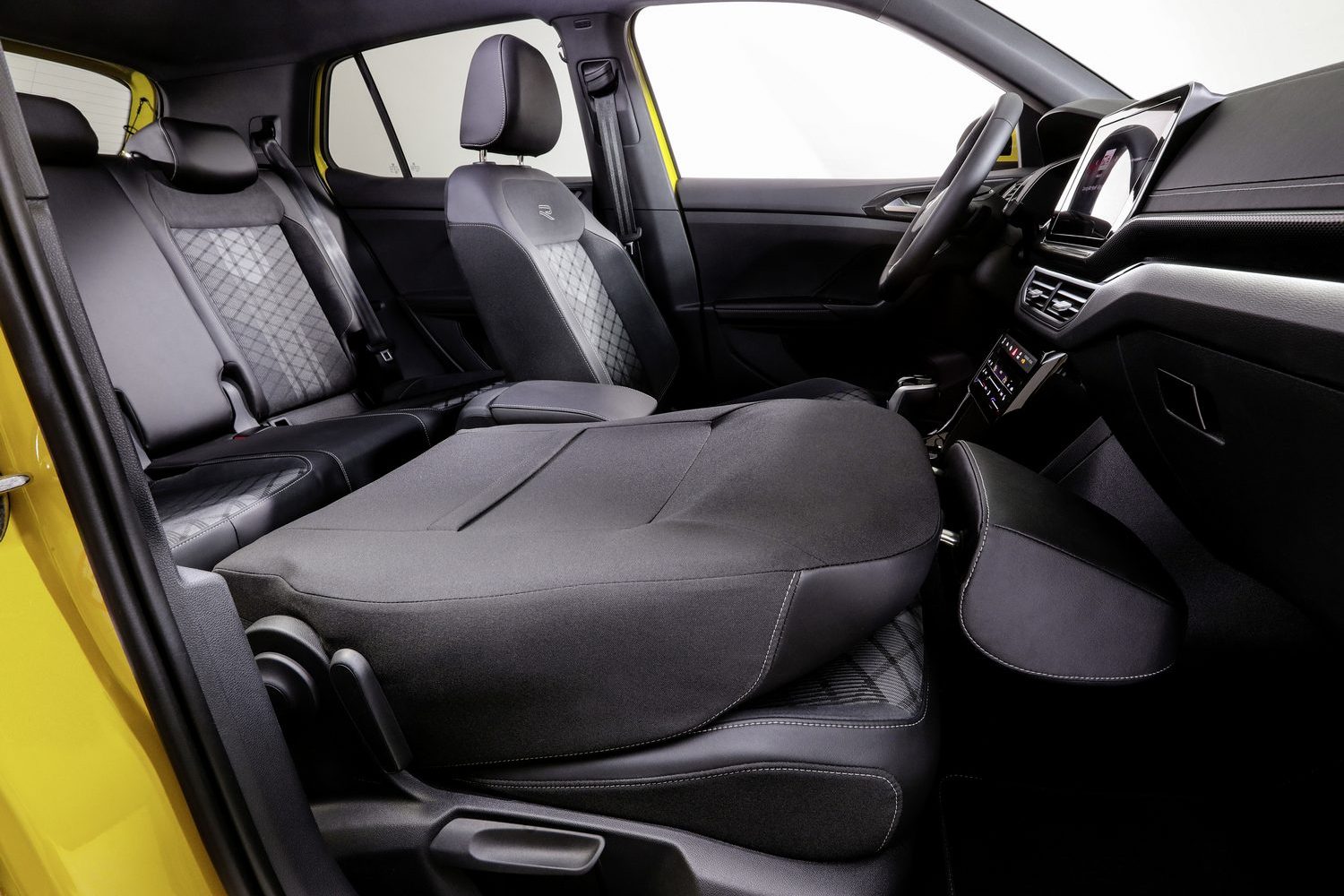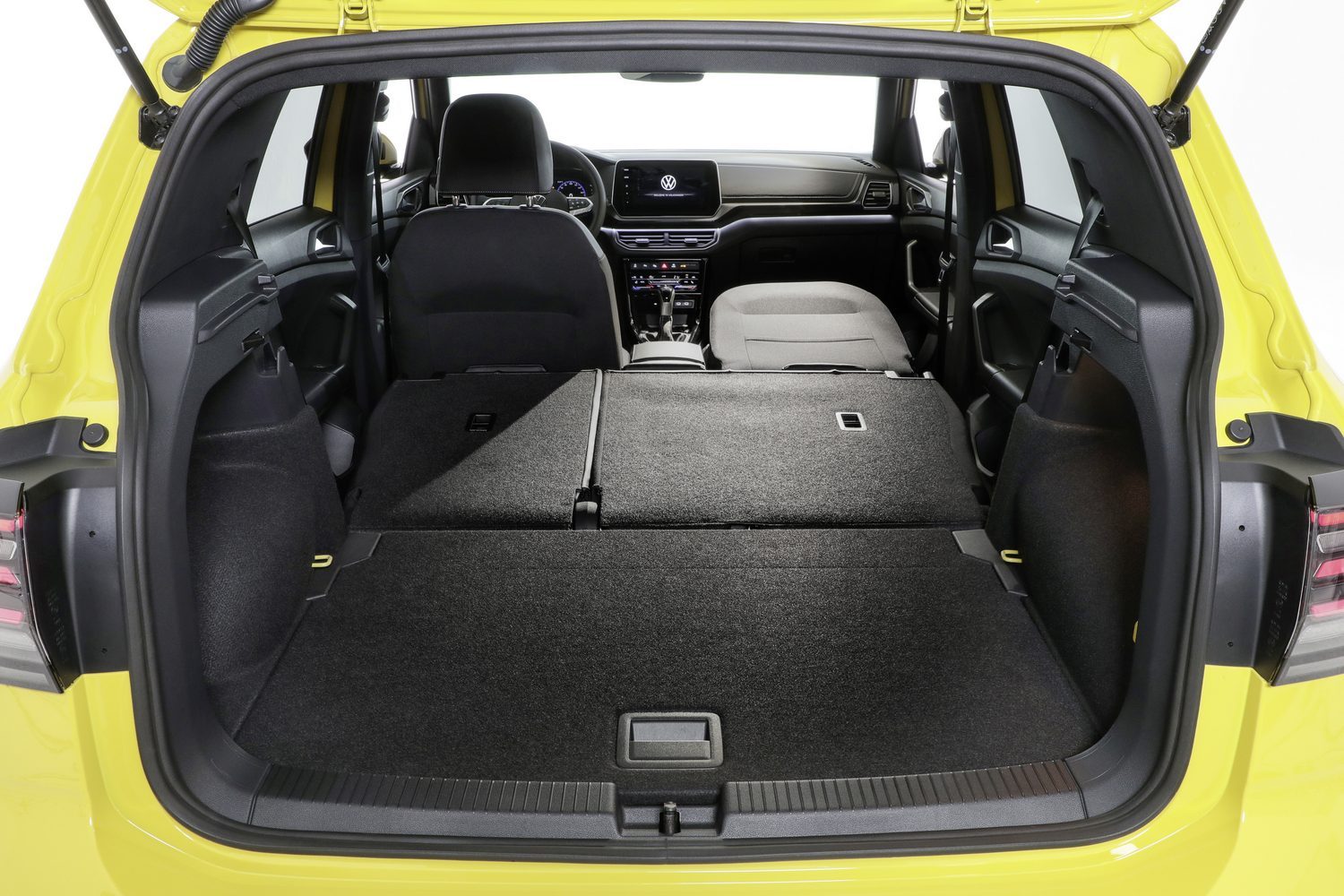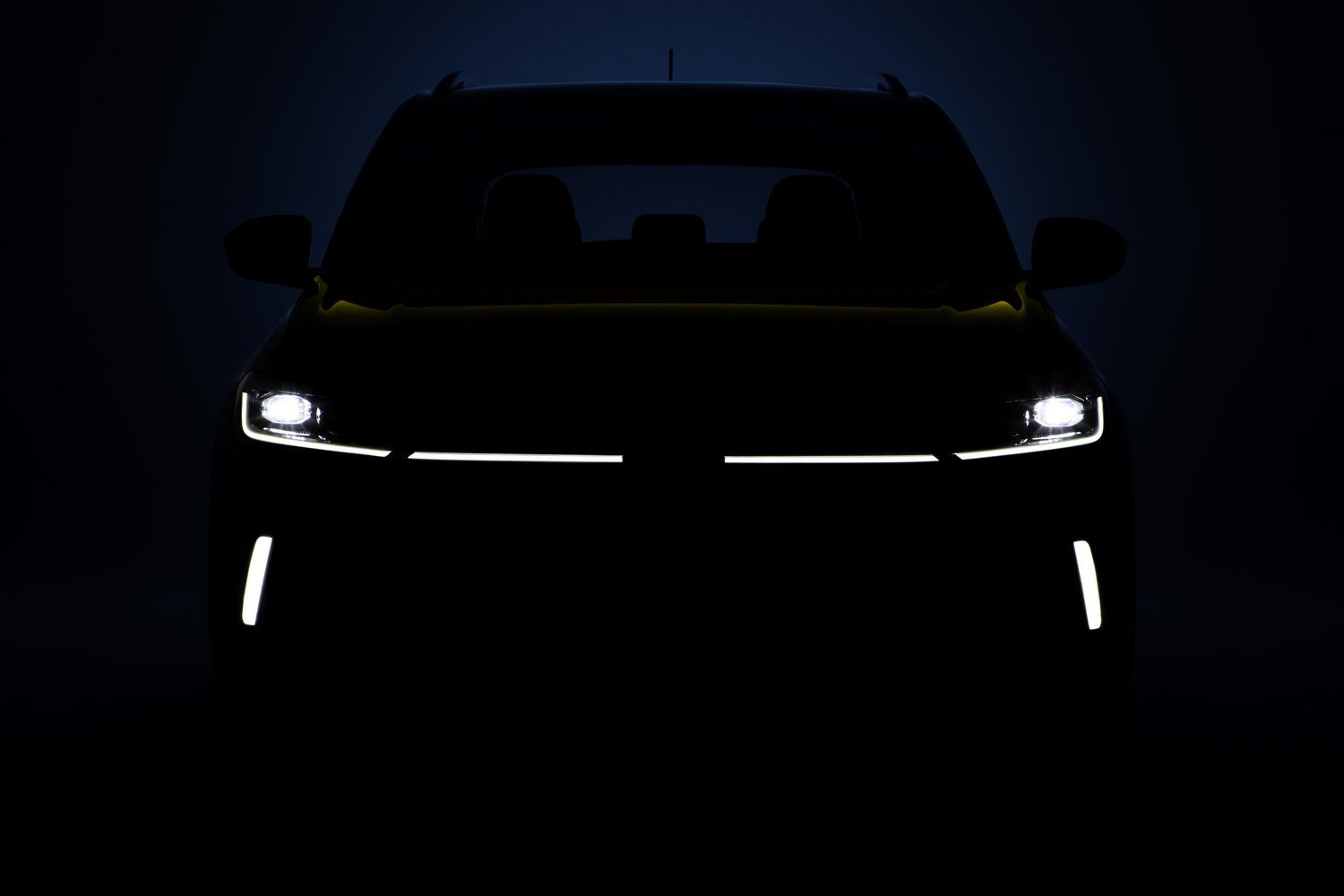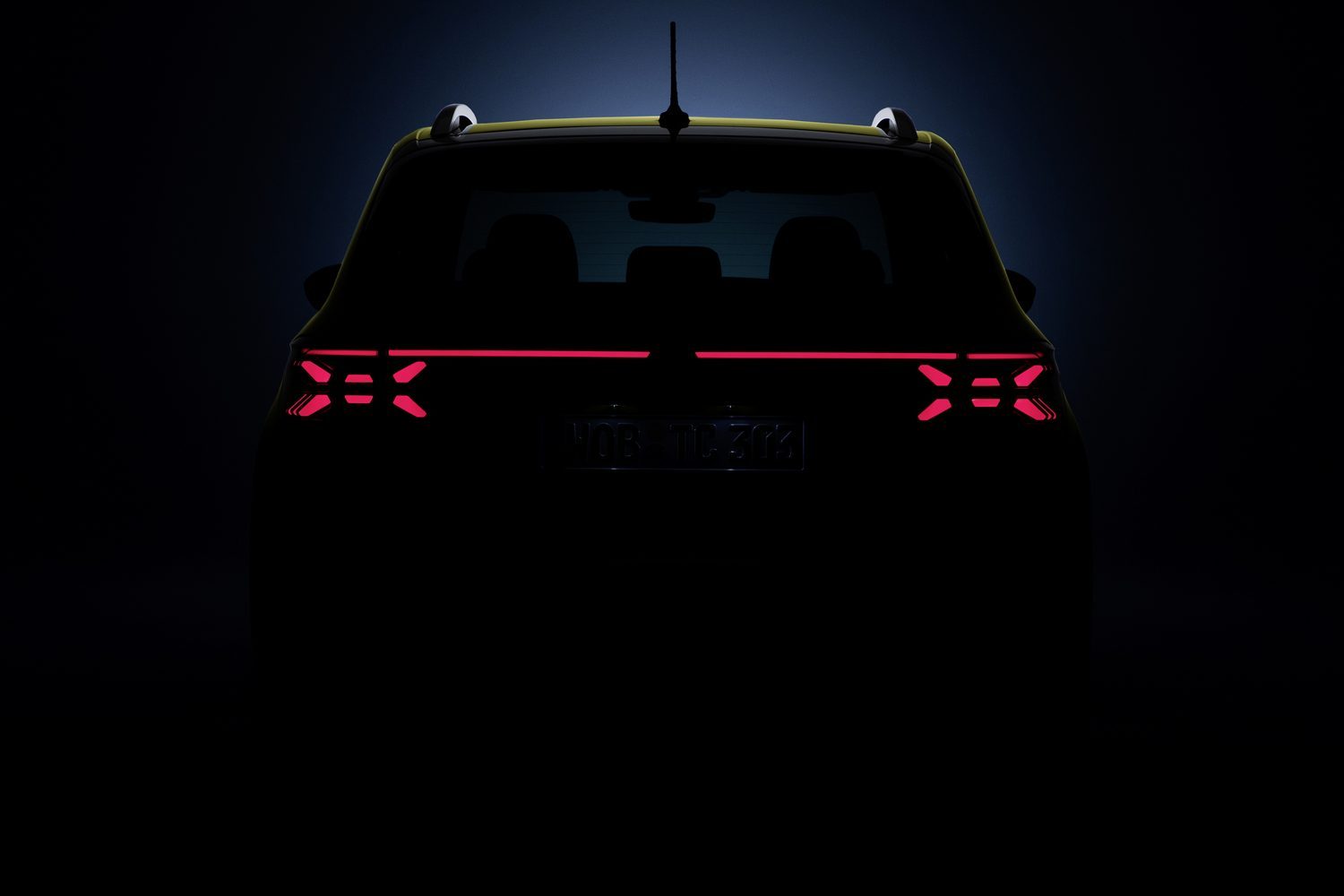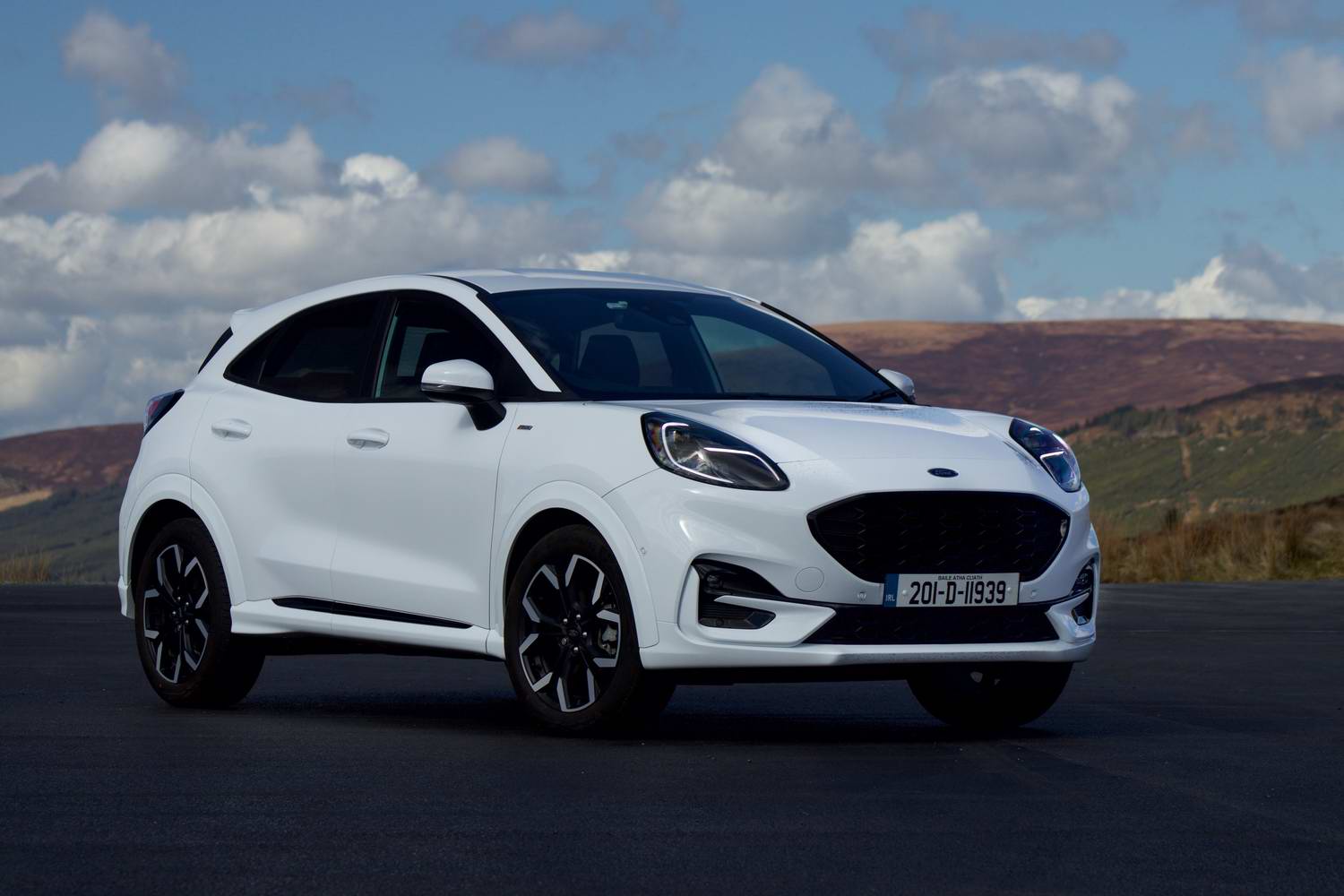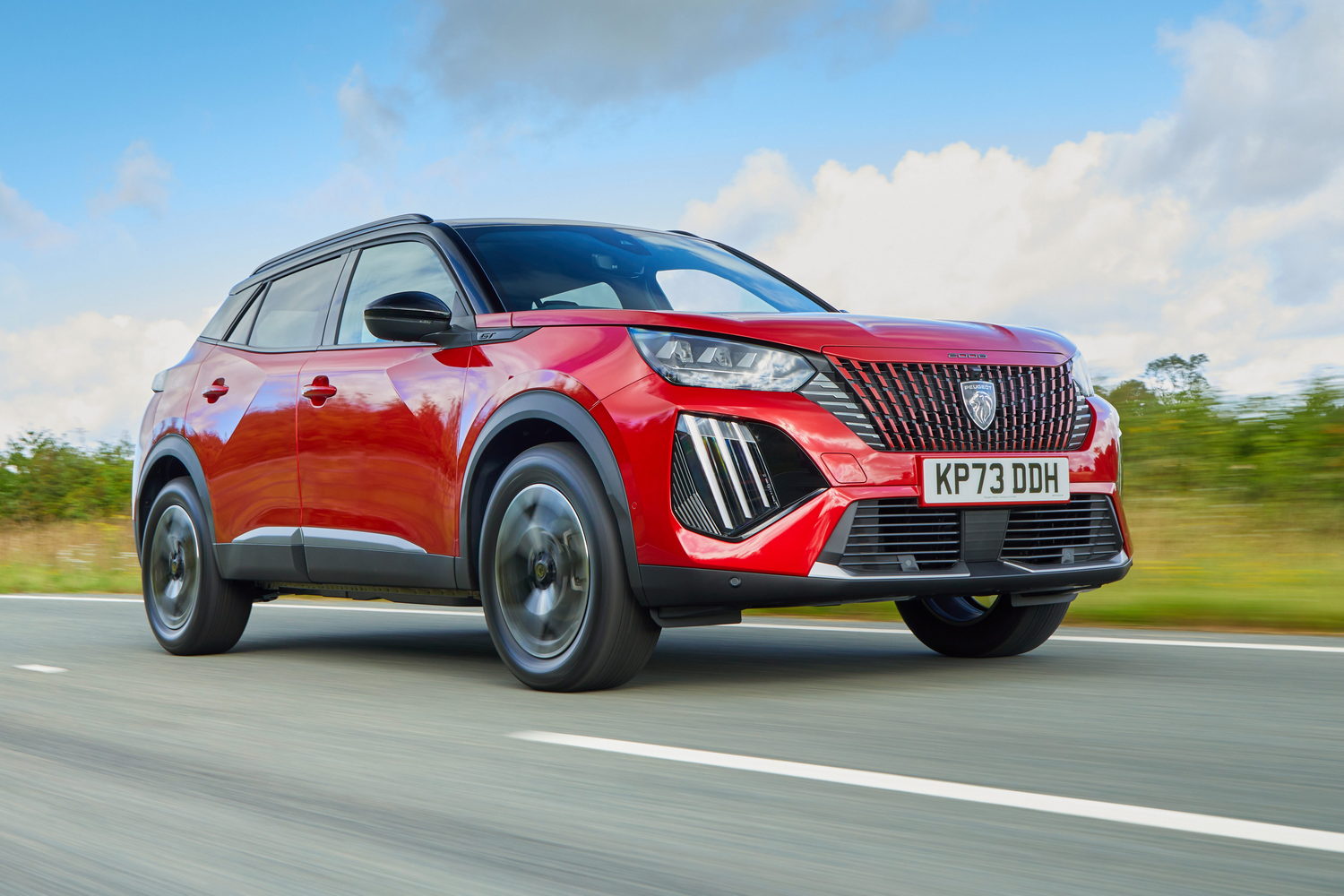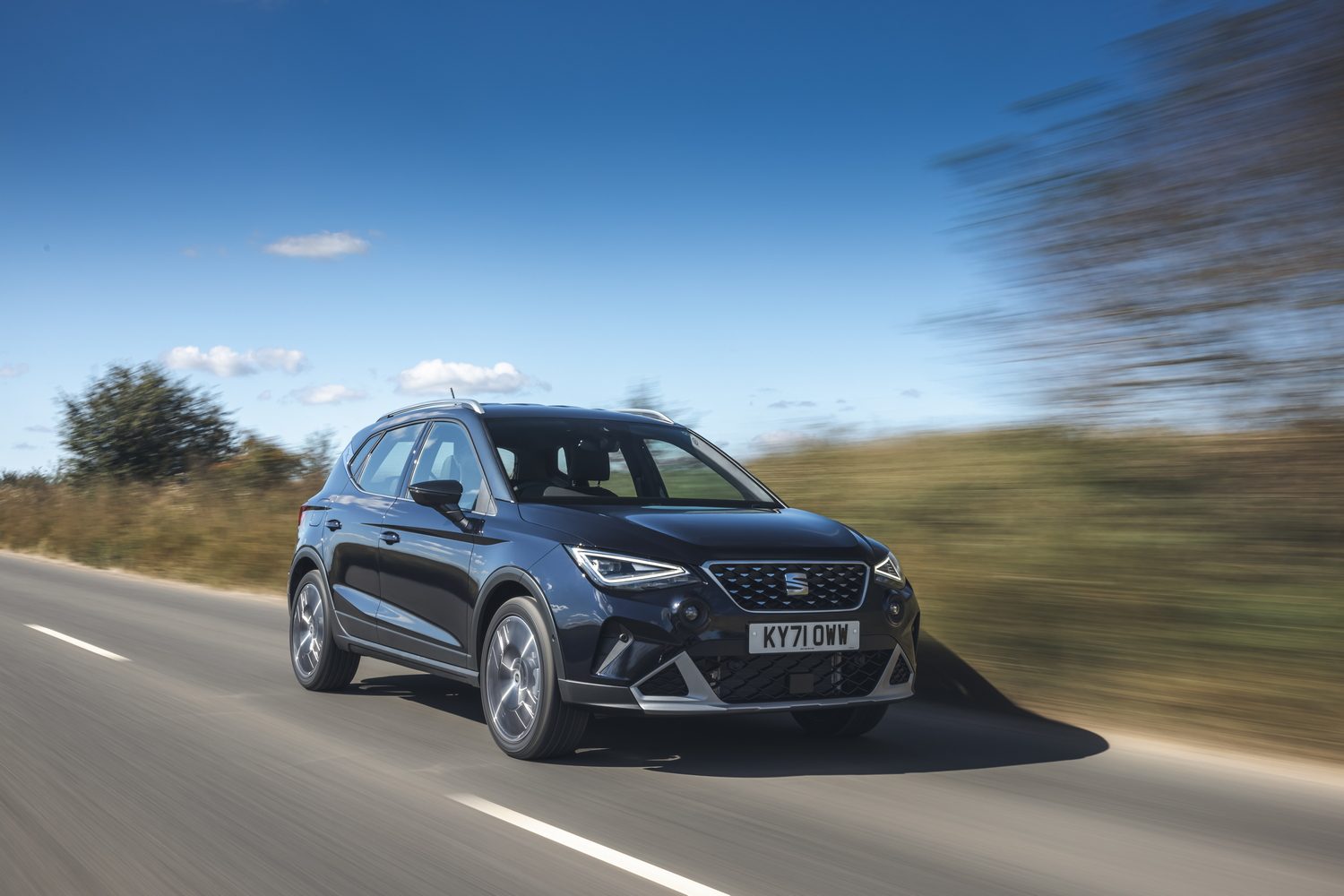Many might argue that Volkswagen didn’t need to do very much to the T-Cross, just four years after its introduction. Especially with around 1.2 million examples sold globally in that time. But the German company knows full well that you need to keep moving if you want to keep up with the competition, so it has given the T-Cross a little mid-life makeover, altering its bodywork, technology and interior. Our first chance to drive the updated car is on UK roads in a slightly different specification to that offered in Ireland.
In the metal
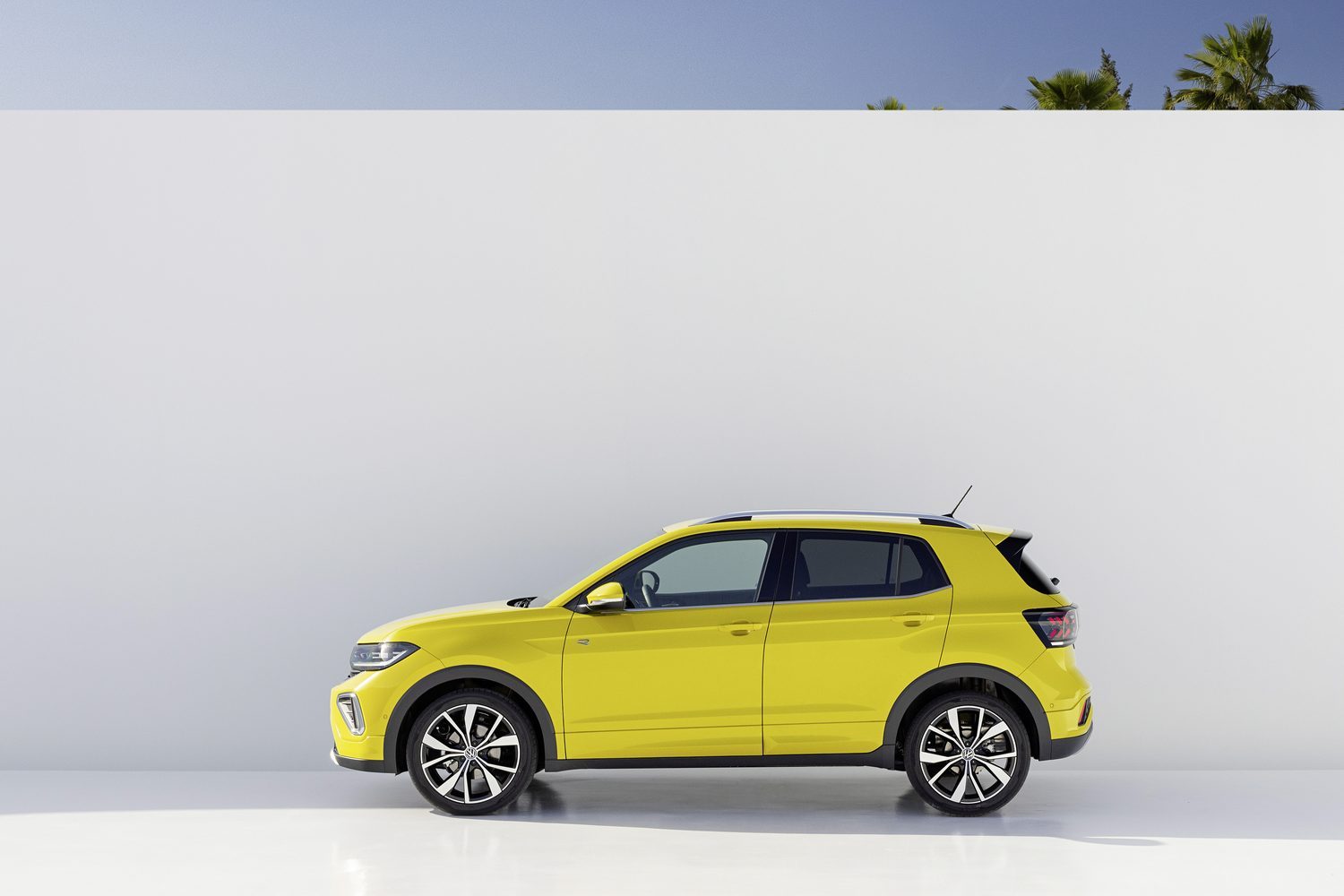
Although the Volkswagen T-Cross hasn’t changed all that drastically compared with its predecessor, there are one or two upgrades of note. Chief among these are the changes to the design, with a new nose and tail for the compact SUV. The grille is largely the same, but is now flanked by new headlights and there’s a new front bumper, while the rear end has also been gently tweaked, with new taillight designs being the most obvious alteration.
Overall, the T-Cross’s design tweaks are minor, but the car didn’t need a total overhaul. Though it may have been with us since 2019, the T-Cross still looks relatively fresh-faced, and these changes have done nothing to damage that.
Inside, Volkswagen has been similarly conservative with the updates, choosing simply to overhaul the dashboard with some new and more tactile materials rather than making wholesale changes to the design. Again, it’s a sensible, pragmatic approach, and one that makes the new T-Cross feel like an improvement on its predecessor without feeling like too much of a departure from a successful formula.
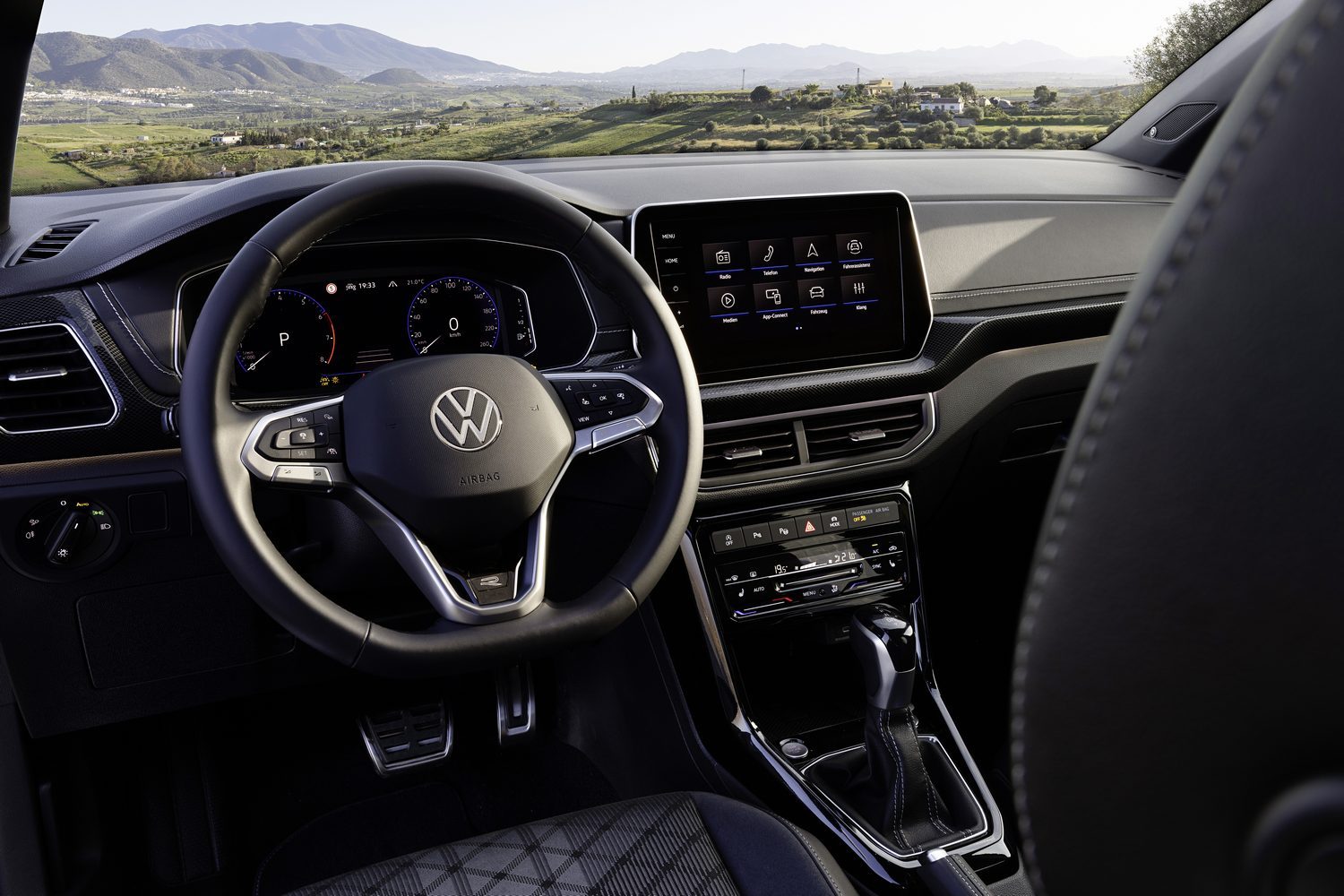
Quality was never an issue for VW’s smallest SUV, and the new materials have only improved its credentials on that front. While the design may not be the most inspiring out there, the dash feels well made and well appointed, as well as being ergonomically sound. The T-Cross has not succumbed to the plague of touchscreen-controlled everything, so you still get physical heater controls and a proper volume knob for the stereo. In some ways, it’s one of the most logical VW interiors out there.
And it comes with an infotainment system that manages to strike a balance between VW’s old systems, which were very good, and the company’s latest tech. It may not have the features and party tricks of a more upmarket screen, but it’s easy to navigate, the graphics look good in a German kind of way and it has all the technology you really need. Most owners will probably use the Android Auto or Apple CarPlay phone connectivity systems more than Volkswagen’s proprietary tech.
If you want, you can upgrade the screen to one of the more upmarket Discover Pro options, but there’s no real need. You might get a bigger screen - up from 8.0 inches across the diagonal to 9.2 inches - but apart from the inclusion of a proprietary navigation system and a few other features, there’s no great advantage to it.
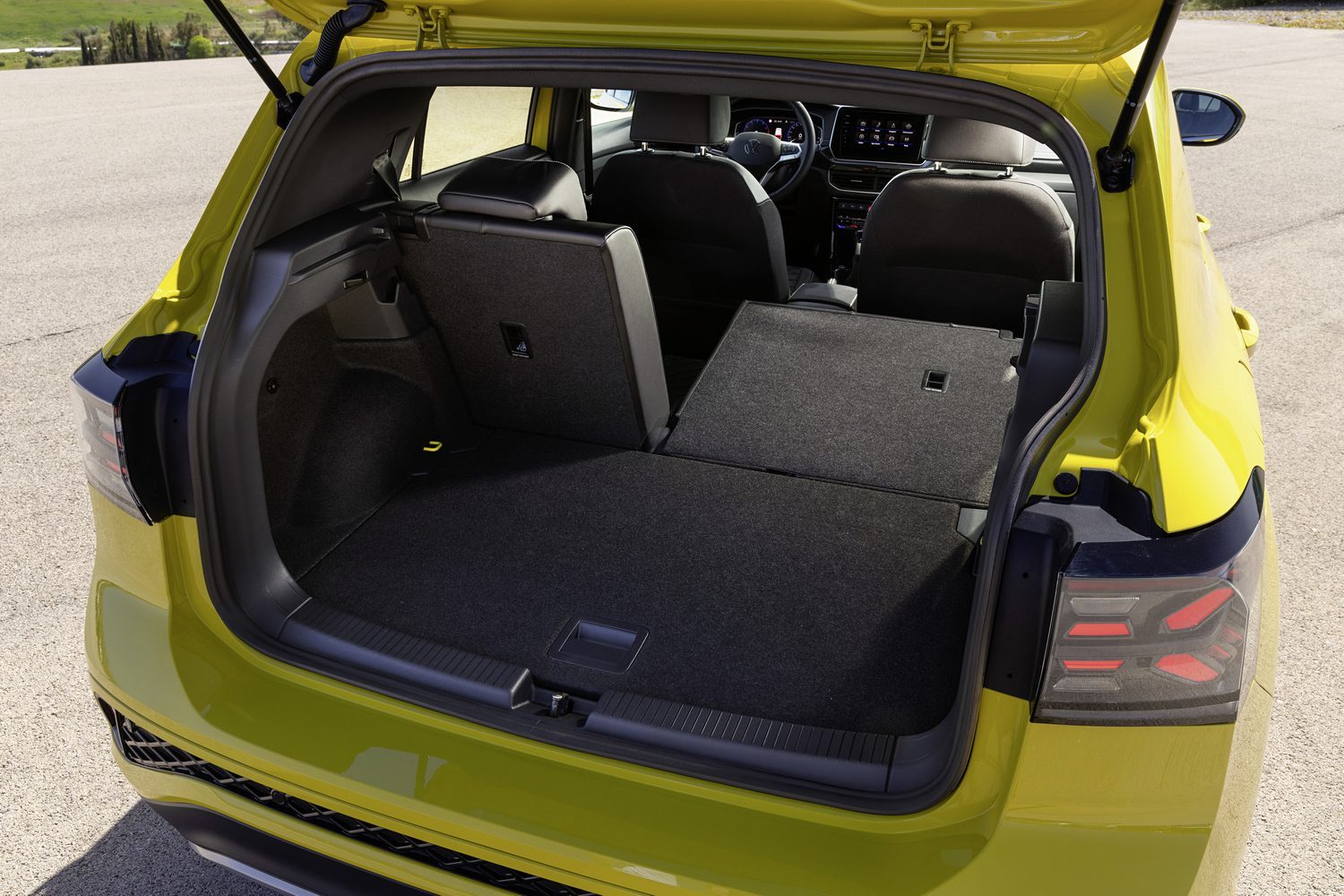
Alongside the screen, whichever one you choose, you also get a digital instrument display as standard. That is a more useful and more modern touch, which really makes the car feel newer and more up to date, as well as giving you a configurable dash. In base-spec cars, the configuration options aren’t all that extensive, but more upmarket models get the larger 10.25-inch screen, which gives you a bit more to play with.
But while the interior may have changed slightly, the space available in the T-Cross has not. This is a surprisingly spacious car, with a maximum boot space of 455 litres with the load bay floor in its lowest position. That’s more space than you get in the larger Volkswagen T-Roc, and it makes the T-Cross very practical indeed. And if you need more room, fold down the rear seats to access almost 1,300 litres of stowage capacity.
Alternatively, if you leave the rear seats upright, there’s ample space for four adults to sit quite comfortably. Space in there is hardly palatial, but even tall adults can occupy the back seats for a couple of hours without complaint, even if they aren’t as well stocked for entertainment or space as those in the front.
Driving it
On the road, the T-Cross feels much the same as its predecessor, and we’ve absolutely no problems with that. It isn’t set up for sportiness whatsoever, and that’s refreshing when so many car makers seem to prioritise handling over comfort.
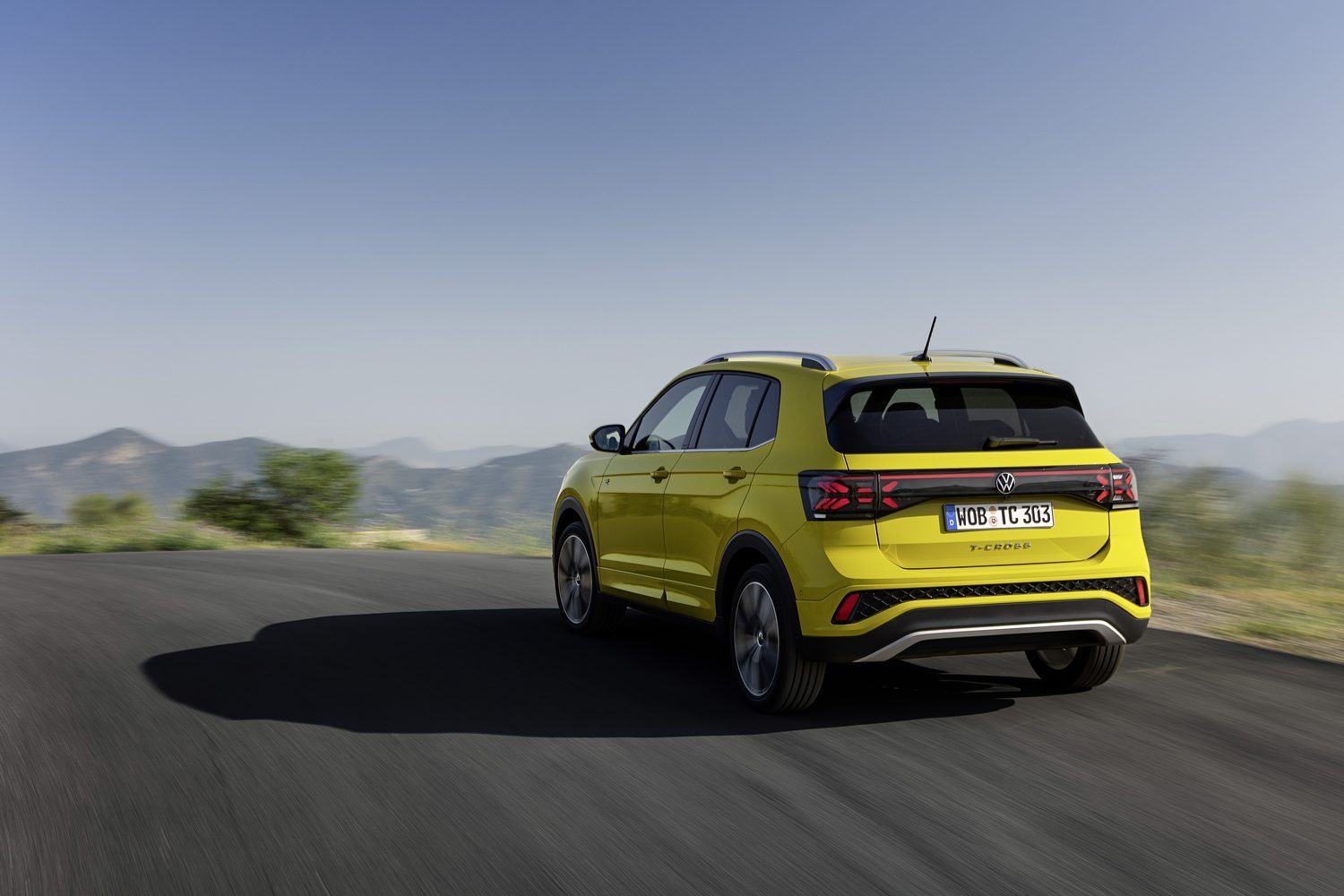
Instead, the T-Cross is quite soft, especially on relatively small 16-inch wheels, and that makes it supple around town and smooth on the motorway. But that softness doesn’t make it vague or unsettled when it hits a bump. Instead, the T-Cross reacts quickly and deftly, immediately sorting itself out over almost any imperfection in the road. The odd bump will catch it out, but they’re few and far between, and it’s stable and secure.
Of course, none of those words are especially exciting, and handling does suffer. The T-Cross leans quite a lot in corners, and that body roll will scare you away from the throttle pedal long before the car runs out of grip, of which it has plenty. It has neat and precise steering too, albeit without all that much in the way of feel, so it’s easy to position, and if you can deal with the progressive lean in corners, it has the tools to get up to a fair pace on country roads. It just doesn’t encourage you to do so.
And that attitude is reflected in the engine range available. There’s a choice of just two petrol units, and both are based on the same 1.0-litre, three-cylinder engine block that has seen service in so many small VWs. They both come with turbochargers, but they get different power outputs, with basic cars getting 95hp while the more powerful ones up that to 116hp. Performance is, unsurprisingly, quite leisurely, but both engines are powerful enough to keep up with traffic, and they’re fairly economical.
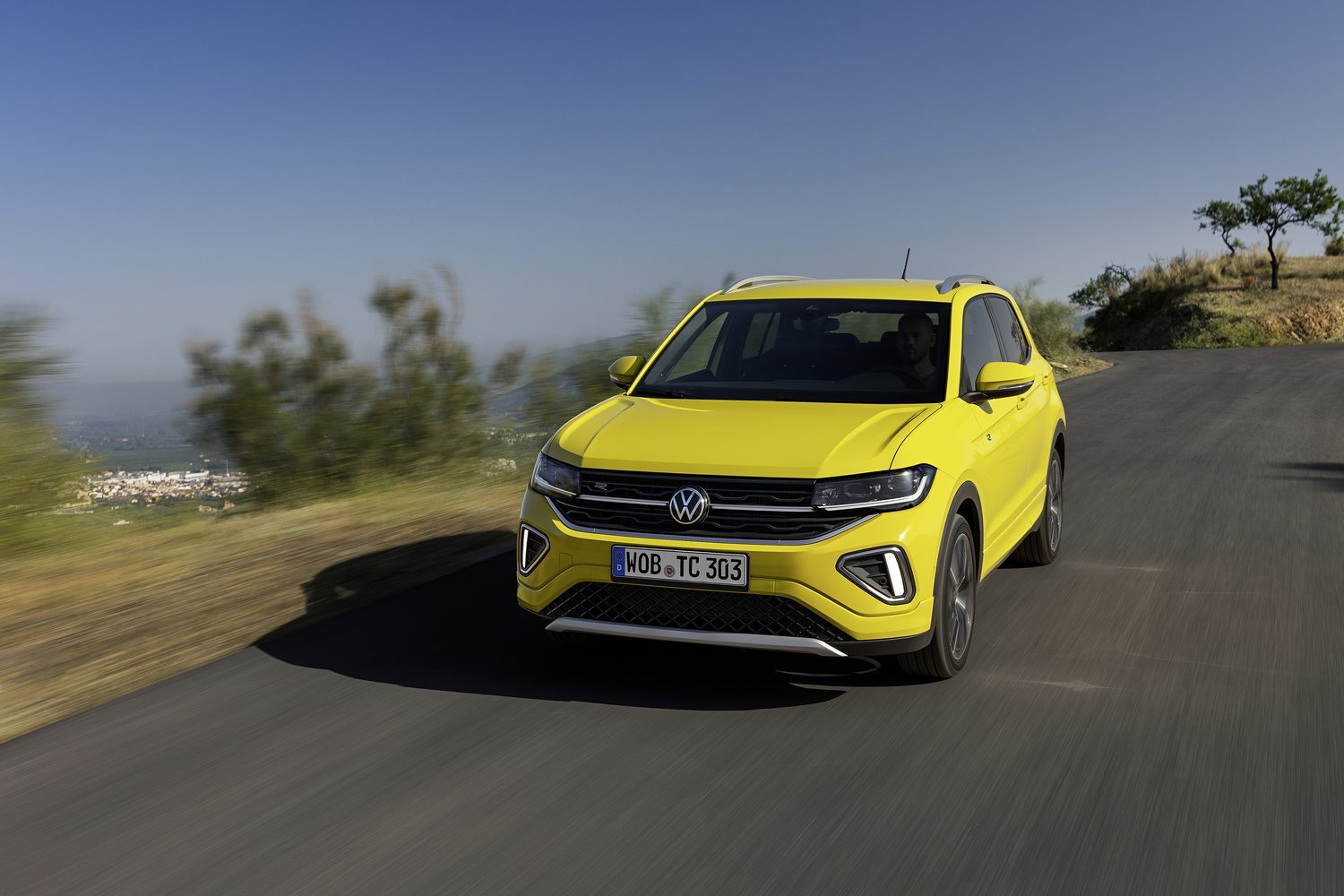
With no all-wheel-drive options, both engines drive the front wheels and burn less than six litres of unleaded every 100km according to the official figures. Despite the 20hp power differential, economy is similar for both engines, as the more powerful unit doesn’t have to work quite as hard as its less potent sibling.
For many, then, the deciding factor will be the gearbox options, with the 95hp getting a five-speed manual as standard, whereas the 116hp versions come with a six-speed gearbox. However, the more powerful car is also offered with a seven-speed automatic, which will appeal to some customers, even if it uses a bit more fuel than the manual. Still, no version of the T-Cross is going to cost a fortune to run.
What you get for your money
In Ireland, the T-Cross range starts at €28,085, which pays for the base-specification car with steel wheels and the 1.0-litre, 95hp engine. But even that gets the digital instrument display, the eight-inch touchscreen and parking sensors, as well as a load of safety features. And with just a few optional extras, you can turn it into a well-stocked vehicle. Leave it alone, though, and it’s €4,000 cheaper than a basic Toyota Yaris Cross and €1,000 cheaper than the new Renault Captur.
Summary
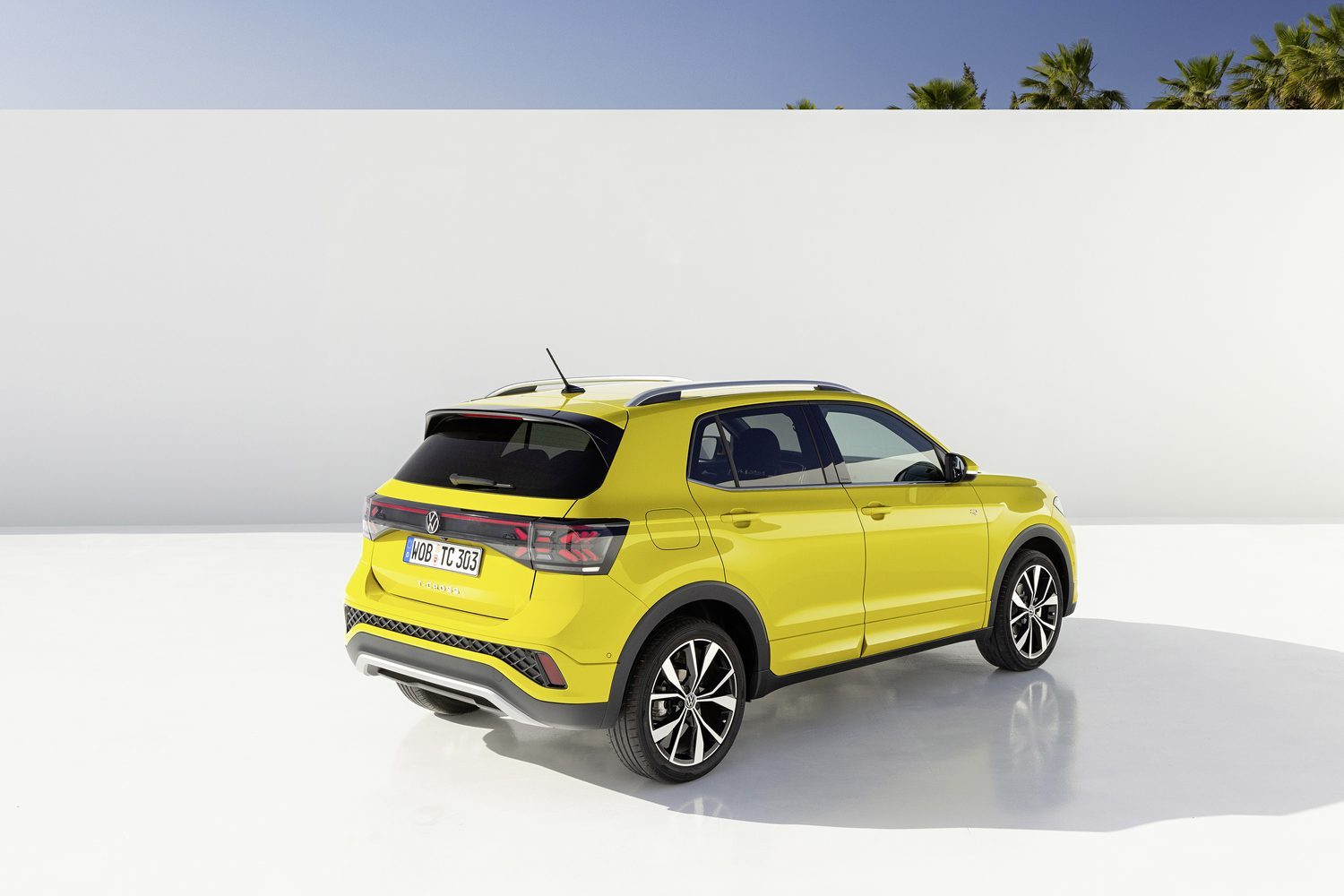
Though the new Volkswagen T-Cross is only a small improvement on its predecessor, it didn’t need to do much more. As before, it’s a fiercely competent, unerringly capable compact SUV that may not excite, but will certainly excel. Even in entry-level form, it’s a fantastic crossover that will slot into its buyers’ lives with consummate ease.
Ask us anything about the Volkswagen T-Cross
If there’s anything about the T-Cross we’ve not covered, or you’d like advice in choosing between it and other cars, you can avail of our (completely free) expert advice service via the Ask Us Anything page.

